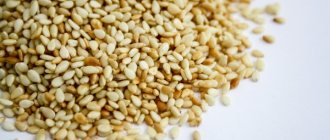Instructions for use of BCAA
We can find a simple indication of the method of using amino acids on any package or can of the corresponding product. Mix one serving (usually 5 g) with 200 ml of water and consume. But here a lot of questions arise: when is it better to take BCAA - before training, or after. Is there a difference in taking BCAA powder and tablets? Should I take amino acids on non-training days? Should I use the same dosage for weight gain and weight loss? Are the dosages different for women and men?
Any instructions can be adjusted to suit your individual conditions, taking into account the mechanism of action of BCAA. These amino acids:
- nourish muscles under load, converting them into energy,
- stimulate protein synthesis through activation of mTOR and other mechanisms,
- act as the basis for protein synthesis,
- suppress catabolism in muscles,
- stimulate insulin secretion, maintaining blood glucose levels,
- activate the release of leptin, reducing appetite and accelerating the breakdown of fats.
BCAA dosage
According to medical research, to replenish amino acids during one workout, an athlete needs approximately 33 mg of leucine per 1 kg of body weight. Thus, a 75 kg athlete would need 2475 mg of leucine, or just under 5 g of BCAA in a standard 2:1:1 ratio. If your weight is less, then the dosage can be proportionally reduced, if more, it can be increased.
Occasionally there is advice to use up to 15-20 g of the supplement at a time, but you need to know that such dosages will not give a positive effect for the muscles, but will only lead to unnecessary costs and harm to health. Firstly, this exceeds the body’s need many times over, which means that excess amino acids will either be excreted without any benefit or stored in fat. Secondly, a sharp and significant increase in the concentration of amino acids also entails an increase in the concentration of their harmful breakdown products, for example, ammonia. The upper limit at which toxic effects (symptoms of poisoning) begin to noticeably affect the dose of leucine is 500 mg/kg, that is, for an athlete weighing 75 kg – 37.5 g.
Norms and time of consumption
If you decide to add branched chain amino acids to your diet, the amount you should take depends on your activity and your goals.
The World Health Organization recommends that the average adult should consume 34 milligrams of BCAA per kilogram of body weight daily.
But more recent research suggests that the amount required may be up to 144 mg per kilogram of body weight per day. If these new results are to be believed, it turns out that adults need to consume:
- Women: minimum 9 grams of BCAA per day;
- Men: minimum 12 grams per day;
- People who consume enough protein in their diet likely do not need supplements.
However, daily requirements may be higher for athletes, people doing strenuous exercise, or for busy people who, due to their profession, sometimes simply do not have time to get the required portion of protein before going to the gym. For them, supplements can be very helpful.
Most of the studies that found beneficial effects used doses of 10 to 20 grams of BCAA per day.
Supplements are available in powder, capsule, tablet and liquid form. The powder dissolves well in water, but many recommend mixing it with juice. Powder is cheaper and therefore more popular. The number of capsules depends on the dosage.
Approximately 37 mg of amino acids are required per 1 kg of body weight. Multiply 37 mg by your weight and divide the result by the manufacturer's recommended capsule dose, such as 500 mg. Then if you weigh 80 kg you need 6 capsules. Some people find it difficult to take 6 capsules at once and another 6 capsules after training, which explains the popularity of powdered BCAA. For an 80 kg athlete, you need 5 g of powder during training and 5 g after it. In liquid form, amino acids are taken 40 ml before and after training.
It is better to take BCAA before or immediately after your workout. Many people trying to gain muscle mass also take them in the morning and before bed.
Getting 5-12 grams of BCAAs daily is an adequate amount for many people. This amount can be obtained through a healthy diet. Athletes may benefit from supplementing with 10-20 grams of BCAA per day.
Daily dosage of BCAA
The daily requirement for branched chain amino acids is easily calculated from the need for protein (15-20% of which is optimally BCAA). That is, the minimum is 150-200 mg/kg. But this need is usually covered by amino acids from protein foods. During active physical work or sports, this need (as well as protein consumption standards) turns out to be higher. A diet lacking in complete proteins (for example, vegetarianism) significantly increases the need for BCAA.
Long breaks between meals and bursts of catabolism during training sessions are also important. Therefore, if we are talking about actively building muscle mass, or training for weight loss, then 5-15 g of BCAA taken during the day will help preserve muscles.
When is the right time to take BCAAs?
When gaining muscle mass, it is recommended to take 3 servings of amino acids per day:
- in the morning,
- 30-40 minutes before training,
- immediately after training.
Some athletes also take BCAAs during training to provide their muscles with constant nutrition. On rest days, it is recommended to drink amino acids in the morning and afternoon between meals.
When losing weight or cutting, the regimen for taking BCAA remains the same. If you are actively burning fat, you can add several servings in between meals to suppress hunger and catabolism. But experienced trainers recommend using protein for these purposes.
How to drink BCAA during training?
If BCAA are consumed in powder form, they can be dissolved in water, add sugar, and you get an excellent drink that can be taken throughout the workout (especially if it lasts more than 1 hour).
The training process actively burns reserves of nutrients (including amino acids) in the muscles, which causes fatigue and destruction of muscle tissue. To compensate for these processes, it is necessary to replenish the reserves of essential amino acids, which BCAA copes with excellently. Protein also helps, but amino acids do not put as much strain on digestion and are absorbed much faster, so they can be taken not only half an hour before exercise, but also during exercise, or immediately after. One serving (5 g) of amino acids before training and one serving after will support muscles well and compensate for the consumption of body resources.
How to take BCAA after training?
After training, you need to take BCAA as quickly as possible, especially if you were unable to take them before training. The advantage of amino acid complexes lies in the maximum rate of absorption of leucine, isoleucine and valine, which from the supplement will instantly begin to flow into the muscles, suppressing catabolism and stimulating muscle growth.
If the goal is not to lose weight, then you can combine BCAA with carbohydrates, since leucine and isoleucine activate insulin secretion and improve the absorption of glucose by muscle cells depleted by physical activity.
Position of the International Society of Sports Nutrition (ISSN)[1])[edit | edit code]
BCAA Information
- BCAAs (leucine, isoleucine, valine) make up approximately 1/3 of all muscle proteins[2], and play a key role in stimulating protein synthesis[3].
- BCAA nutritional supplements have an ergogenic effect in various categories of exercisers. Even during rest, BCAAs improve protein balance either by reducing protein breakdown or increasing protein synthesis, or a combination of these two mechanisms[4][5].
- With constant weight training in men, additional intake of BCAAs in combination with carbohydrates and protein (training complex) leads to a significant increase in protein synthesis compared to the same amount of carbohydrates and proteins, but without leucine[6].
- Oral administration of BCAAs has an ergogenic effect in relation to aerobic physical activity due to inhibition of protein degradation[7].
- Equally important, taking BCAAs before and during aerobic exercise to the point of fatigue accompanied by depletion of muscle glycogen stores may delay the onset of glycogen depletion[8]. This manifests itself in a certain category of so-called. “slow” marathon runners (with a time of completing the distance in 3.05-3.30 hours) compared to “fast” runners (time less than 3.05 hours)[9].
- A number of studies indicate the ability of BCAA to reduce some causes of fatigue in athletes, such as decreased phosphocreatine and muscle glycogen levels, hypoglycemia, and an increase in the free tryptophan/BCAA ratio. During prolonged aerobic exercise, the concentration of free tryptophan and its entry into the brain increases, causing fatigue, and BCAAs can inhibit this process.
- At the same time, with regard to anaerobic exercise, the effect of BCAA cannot be considered positive. In the work of HTPitkanen et al[10], taking leucine at a dose of 200 mg/kg before and during anaerobic running at the limit, as well as during strength training at a dose of 100 mg/kg, did not lead to improvement in performance.
- BCAA improves recovery processes after exercise due to increased muscle protein synthesis and glycogen resynthesis, and also delays the onset of fatigue and supports mental function during aerobic exercise. Because of this, ISSN recommends the consumption of BCAAs (in addition to carbohydrates) before, during and after training sessions.
- The recommended daily allowance (RDA) for leucine alone is 45 mg/kg/day for sedentary individuals, with higher doses for physically active individuals[2]. At the same time, it is necessary to take into account the doses of leucine and BCAA, which enter the athlete’s body along with proteins (especially with enhanced formulas of new protein mixtures with the addition of BCAA). Calculation of additional doses of BCAA is made based on diet, additional intake of pre- and post-workout protein complexes, the level and nature of daily physical activity, anthropometric data and previous experience in taking BCAA. The highest quality protein formulas contain about 25% BCAA from the total amount of amino acids.
- For amateur athletes, regular visitors to gyms and fitness centers, the needs for BCAAs can be covered by high-protein functional foods (diet adjustments) in the form of consuming ready-made liquid mixtures containing whey milk protein in the intervals between regular meals and in the evening before bed.
- In professional athletes (in 90% of cases), full compensation for the need for BCAA is achieved with high quality whey proteins (combinations) or other proteins with additional inclusion of BCAA. If there is a lack of BCAA in protein mixtures, it is recommended to independently take additional amounts of these amino acids, based on the calculated requirements.
- For vegans and vegetarians, the calculation is based on plant proteins enhanced by the addition of BCAAs, based on estimated needs.
How to drink BCAA powder?
The powder form is the most traditional, its price is usually minimal. The main advantage is the ability to dissolve amino acids in water and take them during training, as well as freely mix them with any other supplements - creatine, carnitine, citrulline and even protein.
To drink BCAA powder, you will need a shaker: these amino acids do not dissolve very well and a significant part of them can float on the surface, resisting attempts to stir them with a spoon. A sports shaker will cope with this task with a bang. However, today micronized forms with improved solubility are on sale - they are easier to take.
Another nuance is that natural BCAA without flavoring additives are very bitter, so when purchasing amino acids in powder, it is better to choose a taste that suits you.
To summarize the above
Amino acids with branched side chains provide invaluable benefits to the body, especially in terms of muscle mass gain.
BCAAs are present in many protein foods and in almost all protein powders.
Therefore, consuming supplements with them is not necessary because you can get enough BCAA from your diet or protein supplement if you are not exercising.
Pro's opinion
German bodybuilder Gunther Schlierkamp recommends always having a jar of branched-chain amino acids in your sports bag. For example, it mixes BCAA with glutamine and is taken before, after, or in the morning before cardio.
What experts say
Robert Wolf, a professor at the Reynolds Medical Institute in Arkansas, believes that of the three BCAAs, leucine is the most important.
“The idea behind taking BCAAs is that muscle protein synthesis is limited by biochemical processes, and taking them tends to stimulate those processes,” says Wolf. “But let’s not forget that you can’t grow muscle from nothing.”
He says taking BCAAs without the other six amino acids is pointless—like trying to start a fire without wood.
“I've done research for years, and yes, there is no point in taking BCAAs without a protein supplement or a good protein diet,” he says.
How to take BCAA tablets?
The tablet form of BCAA is very convenient, if you can’t bother with a shaker, you need to take amino acids in an uncomfortable environment - at work, during a trip, on a plane, etc. In addition to ease of administration, there are other advantages - there is no need to choose a flavor, and there are no flavorings or other additional ingredients. The only inconvenience will be that the tablets must be washed down with water, but a small bottle will solve this problem.
It is also necessary to pay attention to the fact that the dosage of amino acids in tablets may be less than in a serving of powdered BCAA, so you may have to take more than one tablet.
How to check the quality of BCAAs
In the conditions of fierce competition in the sports nutrition market, many manufacturers or distributors deliberately underestimate the quality of products in order to reduce production costs and increase profits.
The ideal option is to choose a product from a well-established foreign brand. Even if it costs 10-15% more than its domestic counterpart, you will know that you spent your money on an honest product, unless you run into a fake. Unfortunately, the quality of many domestic manufacturers is poor. They use low-quality raw materials, the products contain foreign impurities, and the composition and energy value do not correspond to those stated on the packaging.
High-quality BCAAs should have the following characteristics:
- slightly bitter aftertaste;
- when dissolved, a small white sediment remains at the bottom of the shaker;
- the consistency of BCAAs is a crushed powder, something between flour and powdered sugar;
Also pay attention to the label and the seal of the jar. If you see that the label is stuck crookedly or not completely, or you notice that the seal of the jar is broken, do not buy this product. There is a 99% chance that you are holding a low quality fake in your hands. The label must also contain a mark indicating compliance with the GMP quality standard.
How to take BCAA capsules?
Capsules are one of the most convenient forms. To drink them, you just need to swallow them, you don’t even have to wash them down with water. Other advantages include no taste, minimal amount of foreign ingredients. The disadvantages include the fact that the capsules cannot be dissolved in water and drunk during training. For the same reason, the absorption time of capsules will be slightly longer. And the dosage may also require taking several capsules. Otherwise, it is a very convenient and effective form of BCAA.
In essence, different forms of amino acid release only affect the convenience of taking them - inside there are still the same leucine, isoleucine and valine, which will work inside the muscles with the same efficiency.
Enhance fat burning
If you are interested in maximum efficiency of fat burning processes, you even more need to adhere to the 2:1:1 ratio. In this situation, isoleucine comes into play. Isoleucine plays a major role in realizing the fat-burning potential of BCAAs. Japanese scientists found that even on a high-fat diet, mice that were given isoleucine gained less fat tissue than mice that did not receive isoleucine.
This is explained by the ability of isoleucine to activate specific receptors known as PPARs (peroxisome proliferator-activated receptors), which force the mobilization of fats and suppress their accumulation. These receptors (PPARs) increase the activity of genes that are responsible for enhancing lipolytic processes in the body and suppress the expression of genes that normally promote fat accumulation. This leads to an increase in the body's ability to break down fats and at the same time reduces the likelihood of their reaccumulation.
It also turned out that the use of BCAA preparations with a greater ratio of amino acids than 2:1:1 can negatively affect energy metabolism, lipolytic processes and even muscle growth. Many high-leucine BCAA products contain only 500 mg of valine and isoleucine or less. Avoid such additives. This dosage is not enough to fill you with energy and protect you from fatigue during a training session. Additionally, it may not be sufficient to maximally stimulate muscle protein synthesis and subsequent muscle growth.
Research shows bcaa ratios greater than 2:1:1 may work against you











